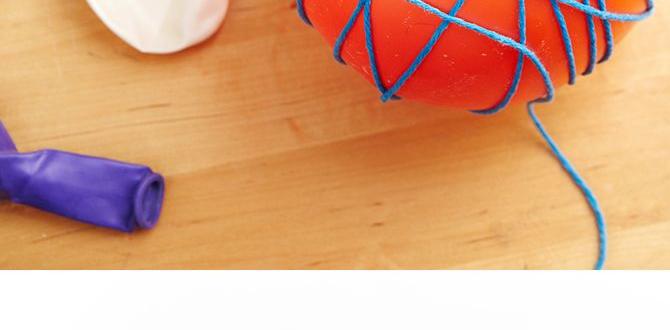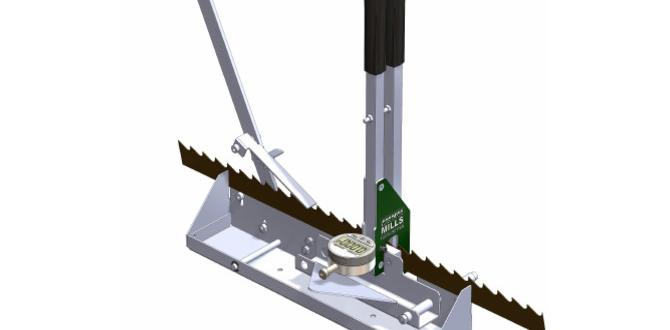Quick Summary: Nail gun recoil happens due to the rapid firing mechanism, air pressure, and firing depth. Fixes include adjusting pressure, ensuring proper magazine loading, checking the driver blade, and using the correct nail size and type. Simple adjustments can make a big difference for a smoother, more controlled experience.
Hey DIYers and woodworking friends! Jack Shaffer here, your go-to guy for all things nailers. Ever squeezed the trigger on your nail gun and felt a surprising kickback? It’s like the tool wants to jump right out of your hand! This “recoil” can be a bit startling, especially when you’re just starting out. It can also make your work less precise and a lot more tiring. But don’t worry, this is a super common issue, and it’s usually quite simple to sort out. We’re going to dive deep into what’s causing that jolt and, more importantly, how we can tame it so you can nail your projects with confidence and ease. Stick around, and you’ll be feeling in control of your nail gun in no time!
Table of Contents
Understanding Nail Gun Recoil: The Jolt Explained
So, what exactly is this “recoil” we’re talking about? When you pull the trigger on a nail gun, especially pneumatic ones, a powerful burst of compressed air drives a sharp metal driver blade forward at high speed. This little plunger slams into the head of a nail, propelling it into your workpiece. That sudden, forceful action has to go somewhere, right? Newton’s Third Law of Motion is at play here: for every action, there’s an equal and opposite reaction. The action is the nail being driven, and the reaction is the force pushing back against the nail gun and, ultimately, your hand. This pushback is what we feel as recoil.
Think of it like firing a small air-powered projectile. The force needed to do the job creates a reaction force. While typically less intense than gunpowder-fired tools, nail guns still generate enough energy to cause noticeable recoil. It’s a natural part of how they work, but understanding its sources helps us manage it effectively.
Key Factors Contributing to Nail Gun Recoil
Several elements can influence how much recoil you experience. It’s not just one thing; it’s usually a combination of factors working together. Let’s break down the main culprits so you know exactly what to look for:
- Air Pressure: This is often the biggest player. Too much air pressure means the driver blade is moving even faster and hitting the nail with more force than necessary. This excess energy translates directly into recoil.
- Firing Depth Setting: If your nail gun is set to drive nails too deep into the material, it’s encountering more resistance. The tool has to work harder, and that extra effort results in a stronger kickback.
- Nail Size and Type: Thicker, longer, or hardened nails require more force to drive. If your nail gun isn’t adequately suited for the specific nail you’re using, or if the nails themselves are difficult to drive, you might feel more recoil.
- Tool Design and Weight: Some nail guns are designed with recoil-dampening systems, while others are more basic. Heavier tools might feel like they have less recoil because the increased mass absorbs some of the force, but this isn’t always the case. Lighter tools can sometimes feel like they kick more because there’s less mass to absorb the impact.
- Magazine Loading and Nail Feed: If the nails aren’t loaded correctly in the magazine, or if the feeding mechanism isn’t smooth, it can cause inconsistent firing and potentially more jarring recoil.
- Driver Blade Condition: A bent or damaged driver blade won’t strike the nail perfectly square. This misalignment can lead to incomplete drives and an increase in recoil as the force isn’t transferred efficiently.
- Sequential vs. Contact Firing Mode: While not a direct cause of recoil, the firing mode can influence how you perceive it. Contact firing (bumping the nose against the wood) can sometimes feel more abrupt than sequential firing (trigger pull followed by nose contact), though the underlying forces are similar.
Essential Fixes for Reducing Nail Gun Recoil
Now for the good stuff! We’ve identified the causes, so let’s get to the solutions. These fixes are straightforward and can significantly improve your experience. Remember, safety first! Always disconnect the air supply or battery before making any adjustments to your nail gun.
1. Adjusting Air Pressure: The Sweet Spot
This is your number one tool for managing recoil. Nail guns operate on compressed air, and the pressure gauge is your best friend. Most tool manufacturers provide a recommended operating pressure range, usually printed on the tool itself or in its manual. It’s crucial to stay within this range for both safety and performance.
Why it helps: Too much pressure forces the driver blade with unnecessary might, leading to excessive recoil. Too little pressure means nails won’t drive properly. The goal is to find the “sweet spot” where nails are driven consistently and flush with the surface, with minimal kickback.
How to do it:
- Consult Your Manual: Always refer to your specific nail gun’s user manual for the recommended PSI (pounds per square inch) range. A good general starting point for many framing nailers is 70-100 PSI, and for finish nailers, it might be lower, around 70-90 PSI.
- Use a Pressure Regulator: Your air compressor should have a regulator. This is what you’ll use to dial in the exact pressure. If you don’t have one integrated into your compressor, you can purchase an inline regulator. Visit a reputable site like Grainger’s guide on air regulators for more detailed information on choosing and using them.
- Test and Adjust: Connect your nailer to the air supply. Start at the lower end of the recommended PSI range. Drive a few nails into scrap material identical to your project wood. Check if the nails are setting flush. If they’re not, slowly increase the air pressure by 5 PSI increments, testing after each adjustment. Continue until nails are driven properly without over-penetrating or causing excessive recoil. Document the pressure that works best.
Pro Tip: The ideal pressure can also depend on the type of wood you’re working with. Harder woods might require slightly higher pressure than softer woods.
2. Fine-Tuning the Depth Adjustment
Most modern nail guns have an adjustable depth setting. This feature allows you to control how far the nail is driven into the material. You can usually find this as a dial, a lever, or a knob, often located near the nose of the gun.
Why it helps: If the depth setting is too high, the nail will be driven deeper than needed. This means the nail gun is working harder to overcome resistance, leading to a sharper kickback. By setting the depth correctly so nails are flush or slightly countersunk, you reduce the strain on the tool and minimize recoil.
How to do it:
- Locate the Adjustment: Familiarize yourself with where the depth adjustment mechanism is on your nail gun.
- Start with a Medium Setting: If you’re unsure, begin with a setting that doesn’t look too aggressive.
- Test on Scrap Material: Again, use scrap wood that matches your project.
- Adjust Incrementally: Fire a nail. If it’s too proud (sticking out), increase the depth (turn the dial/lever in the direction that drives the nail deeper). If it’s sunk too deep, decrease the depth. Continue making small adjustments until the nail heads are sitting flush with the surface, or just slightly below, as desired for your project.
- Consider Material Hardness: Softer woods will accept nails more readily, so you might need a shallower setting. Harder woods require a deeper setting to achieve a flush finish.
3. Using the Right Nails
The nails themselves play a significant role. Using incompatible or inappropriate nails can lead to jams, misfires, and increased recoil.
Why it helps: Nails that are too long, too thick, or made of a material your gun isn’t designed for will require more force to drive. If the nail is a tight fit in the magazine or requires excessive force from the driver blade to penetrate the wood, the energy transfer can be less efficient, resulting in more pronounced recoil. Always match the nail to the gun and the task.
How to do it:
- Check Your Nail Gun’s Specs: The nail gun’s manual will specify the acceptable nail sizes (length and gauge) and types (e.g., smooth, ring shank, galvanized).
- Read the Nail Packaging: Nail packaging clearly states the size, gauge, and finish. Ensure it matches your tool’s requirements.
- Consider Nail Material: For extremely hard woods, you might consider higher-quality nails or nails specifically designed for dense materials. However, for most common DIY projects, standard construction-grade nails are sufficient.
- Avoid Overdriving: Even with the correct nails, if your depth setting is too aggressive or your air pressure too high, you can split wood or cause other issues.
Here’s a quick reference for common nail types:
| Nail Gun Type | Typical Nail Length | Typical Nail Gauge (Diameter) | Common Uses |
|---|---|---|---|
| Framing Nailer | 2″ to 3.5″ | .113″ to .148″ | Structural framing, decks, fences, sheds |
| Finish Nailer (16-gauge) | 1″ to 2.5″ | .062″ | Trim, baseboards, crown molding, chair rails |
| Brad Nailer (18-gauge) | 0.5″ to 1.25″ | .040″ | Delicate trim, craft projects, small moldings |
| Pin Nailer (23-gauge) | 0.5″ to 1″ | .023″ | Very fine trim, delicate repairs, holding small pieces |
4. Ensuring Proper Magazine Loading
A jam-free operation is key to smooth firing. If your nails aren’t seated correctly in the magazine, it can cause the driver blade to bind or strike irregularly, leading to jolts and recoil.
Why it helps: A properly loaded magazine ensures that each nail is presented to the driver blade in a consistent, straight manner. This allows for a clean, efficient strike and reduces the chances of the driver blade glancing off the nail or encountering resistance that isn’t part of the wood penetration. This leads to smoother firing and less unexpected kick.
How to do it:
- Clear the Magazine: Before loading, ensure the magazine is free of debris or bent nails.
- Align Nails Correctly: Most magazines have guide rails or slots. Make sure the nails sit straight within these guides. The heads should be aligned, and the bodies should be parallel.
- Don’t Force It: If nails aren’t sliding in smoothly, check for obstructions or bent nails in the strip.
- Ensure the Driver Blade Retracts Fully: Before loading, make sure the driver blade is retracted. Some tools have a lock-back feature for the magazine that also retracts the driver.
- Check the Follower: Ensure the follower (the spring-loaded part that pushes the nails forward) is moving freely and applying consistent pressure.
5. Inspecting and Maintaining the Driver Blade and Bumper
The driver blade is the heart of the nail gun’s firing mechanism. The bumper, or nose pad, cushions the impact of the tool against the workpiece.
Why it helps: A bent or damaged driver blade will not hit the nail head squarely. This misalignment leads to less efficient energy transfer, sending more force back into the tool as recoil. A worn-out bumper can also affect how the tool seats on the material, potentially leading to inconsistent firing and perceived recoil.
How to do it:
- Disconnect Power/Air: Always ensure the tool is powered off or disconnected from its air source.
- Access the Driver Blade: Depending on your model, you might need to remove the magazine or a front cover to access the driver blade. Consult your manual.
- Visually Inspect for Damage: Look for any bends, nicks, or kinks in the driver blade. A perfectly straight, sharp edge is ideal.
- Check for Proper Movement: Gently push the driver blade back and forth (if possible without power) to ensure it moves smoothly without sticking.
- Inspect the Bumper/Nose Pad: Check the tip of the nail gun where it contacts the wood. If it’s heavily worn, cracked, or damaged, it could be affecting performance. Many nailers have replaceable bumpers.
- Lubrication: For pneumatic nailers, regular lubrication as recommended in the manual is vital for smooth operation of the internal mechanisms, including the driver blade. You can find resources on tool maintenance, like OSHA’s guidance on nail gun safety which implicitly covers maintenance for safe operation.
6. Balancing Tool Weight and Grip
Sometimes, how you hold the tool and the tool’s inherent design play a role in how you perceive recoil.
Why it helps: A firm, consistent grip allows you to absorb some of the recoil through your stance and body. The tool’s own weight can also help dampen vibrations. If a tool feels too light or unbalanced, the recoil might feel more pronounced.
How to do it:
- Firm, Two-Handed Grip (when possible): Whenever practical, use a firm grip with both hands (if the tool design allows for it). This gives you more control.
- Stable Stance: Stand with your feet shoulder-width apart. If possible, brace yourself against a stable surface.
- Proper Tool Fit: If you frequently use nail guns, consider investing in a tool that feels well-balanced and comfortable in your hand. Ergonomics matter!
- Use the Right Tool for the Job: A heavier framing nailer will naturally have more mass, which can absorb some recoil compared to a very lightweight finish nailer. However, ensure the tool isn’t so heavy that it leads to fatigue, which can also make recoil feel worse.
7. Considering Pneumatic vs. Cordless
The power source of your nail gun can influence recoil characteristics.
Why it helps:
Pneumatic Nailers: Rely on compressed air. Their recoil is directly tied to the air pressure and the speed at which the air drives the piston. They can sometimes offer a sharper, more immediate recoil.
Cordless (Battery-Powered) Nailers: These often use either a pneumatic system powered by a small on-board compressor and battery, or a direct drive mechanism (like a spring or flywheel) powered by the battery that drives the nail. Some battery-powered models are designed with internal dampening systems to reduce recoil. The feel can vary significantly by brand and model.
* Fuel Cell Nailers (Gas-Powered): These use a combination of a fuel cell and a battery. The combustion process can sometimes lead to a different recoil feel, often described as more of a “thump” than a “snap.”
What to do: If you’re consistently struggling with recoil and considering an upgrade, research newer models. Many manufacturers are focusing on improving ergonomics and recoil reduction. Reading reviews and even trying out different models at a tool store can be very helpful. For instance, advancements in battery technology and motor efficiency in cordless tools often aim to mimic the power of pneumatics with improved handling.
Troubleshooting Table: Quick Fixes for Common Recoil Issues
Here’s a handy table to help you quickly identify and fix common problems related to nail gun recoil:
| Symptom | Potential Cause | Essential Fix(es) |
|---|---|---|
| Nails consistently not driving flush; tool feels like it kicks hard. | Air pressure too high. | Reduce air pressure at the regulator. |
| Nails are setting too deep; noticeable recoil. | Depth adjustment set too deep. | Adjust depth setting shallower. |
| Jarring, inconsistent recoil; occasional jams. | Incorrect nail size or type; bent nails. | Use |


